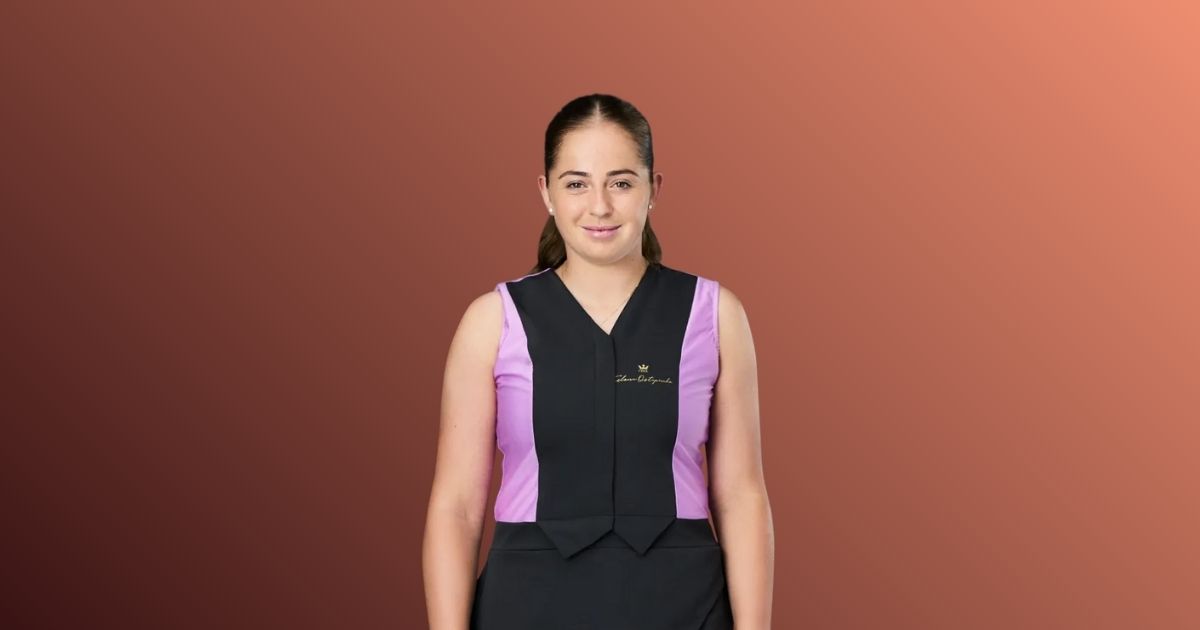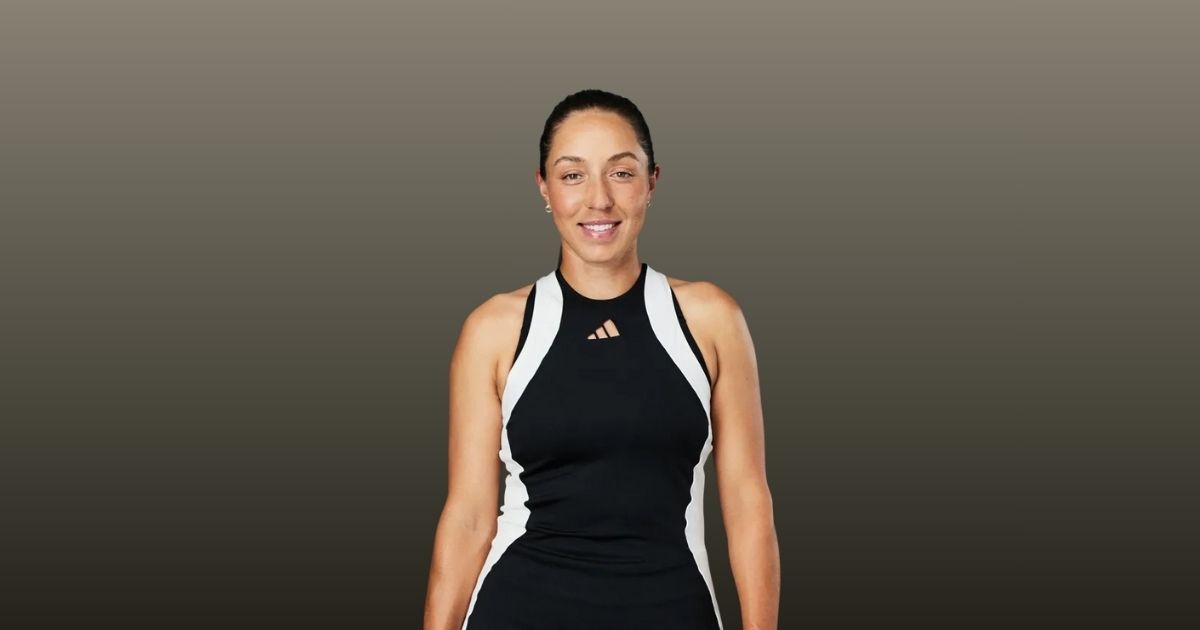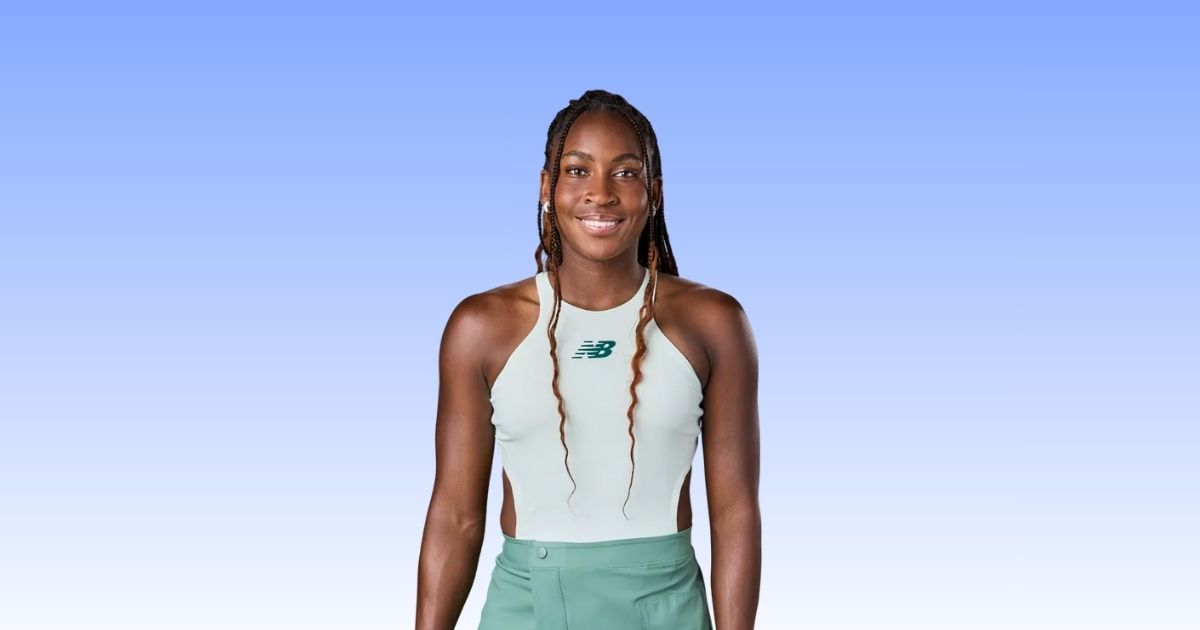Table of Contents
Jelena Ostapenko: No Fear, No Limits
Jelena Ostapenko, a tennis star from Latvia, became famous around the world with her fast, daring style of play. Born June 8, 1997, in Riga, Latvia, Ostapenko transformed from a promising junior into a Grand Slam winner through her aggressive baseline approach and unwavering self-belief. Her journey also mirrors the rise of other young players like Amanda Anisimova, who made an early impact on the WTA Tour with bold, fearless tennis.
Her journey represents more than personal achievement—it shows how raw power, combined with mental toughness, can overcome established tennis hierarchies. Ostapenko is one of the most exciting tennis players to watch right now because of the way she hits the ball flat and her ability to make winners from awkward angles. Her creative shot-making has often drawn comparisons to players such as Karolina Muchova, known for using variety and precision to change the flow of matches.
This Jelena Ostapenko biography examines her rise from Latvian tennis courts to global recognition, analyzing the key factors that shaped her remarkable career. Tennis fans will learn how her aggressive style, willingness to take risks, and mental toughness helped her become a legend and inspire a new crop of players to do the same.
Early Life and Background
Personal Information
- Born : June 8, 1997, in Riga, Latvia
- Height : 5’10” (177 cm)
- Playing Style : Right-handed, two-handed backhand
- Father : Jevgenijs Ostapenko, a former footballer
- Mother : Jelena Jakovleva, former tennis player
Career Overview and Playing Style
Playing Style Analysis
Aggressive Baseline Dominance:
- Positions close to baseline to take balls early and dictate rally tempo
- An exceptional forehand generates tremendous pace and sharp angles
- Two-handed backhand provides stability while maintaining attacking options
- Court positioning creates immediate pressure on the opponent’s defensive capabilities
Mental Game Mastery:
- A fearless approach allows taking risks when matches reach critical moments
- Emotional control helps maintain focus during pressure situations
- Strategic thinking adapts game plans based on opponent weaknesses
- Resilience converts difficult situations into competitive advantages
Physical Conditioning:
- Comprehensive fitness programs support extended match durations
- Agility training enhances court coverage and shot preparation
- Strength development builds power without compromising technical precision
- Recovery protocols maintain peak performance throughout tournament seasons
Surface Adaptability
Clay Court Excellence:
- Natural affinity for clay court tennis through patient point construction
- Sliding technique maximizes court coverage on slower surfaces
- Heavy topspin creates difficult bounces for opponents
- Tactical understanding of clay court positioning and strategy
- Her development on clay also connects her to modern specialists like Iga Swiatek, who has set new standards for clay-court dominance and represents the next generation of elite clay performers.
Hard Court Success:
- Aggressive return games create immediate pressure on service games
- Consistent depth in groundstrokes prevents opponents from attacking
- Net approach skills developed for hard court opportunities
- Mental toughness handles a faster pace and shorter rally exchanges
Major Career Milestones
Grand Slam Break-through
2017 French Open Victory:
- Maiden Grand Slam title at age 20 shocked the tennis establishment
- Defeated multiple seeded players through confident, fearless play
- Victory established Latvia as an emerging tennis nation
- Prize money and ranking improvements transformed career trajectory
Subsequent Grand Slam Performance:
- Consistent Grand Slam presence across multiple tournaments
- Deep runs at the Australian Open and Wimbledon showed surface versatility
- Mental strength in crucial tournaments became a defining characteristic
- Maintained competitiveness against the world’s best players
WTA Tour Success
Multiple WTA Titles:
- Various WTA tournament victories across different surfaces and conditions
- Ranking achievements reached the Top 10 through consistent excellence
- Prize money earnings exceeded expectations for a young career
- Sponsorship deals reflected global marketability and appeal
Significant Victories and Achievements
Career-defining Matches:
- Victories over former world number ones established credibility
- Comeback victories demonstrated resilience under pressure
- Straight-set wins against elite players showed tactical superiority
- Tournament runs included defeats of multiple Grand Slam champions
Ranking Progression:
- A steady climb through the WTA rankings showed continuous improvement
- Top 10 break-through marked transition from promising player to elite contender
- Sustained high rankings demonstrated the ability to maintain elite-level performance
- Career-high achievements resulted from years of dedicated preparation
Break-Through Moments
The 2017 French Open Journey
Path to Victory:
- Early round victories built confidence and match fitness
- Each win increased belief in championship possibilities
- Mid-tournament tactical adjustments demonstrated adaptability
- Final match performance showed Grand Slam championship readiness
Impact on Latvian Tennis:
- National attention increased tennis’ popularity throughout Latvia
- Inspired young Latvian players to pursue professional tennis careers
- Government and private investment in tennis development programs increased
- Cultural pride from international sporting achievement
World Top 10 Achievement
Ranking Milestone:
- Consistent tournament results accumulated ranking points steadily
- Mental preparation handled the pressure of reaching the elite level
- Media attention increased significantly with the ranking success
- Responsibility of representing Latvia and women’s tennis globally
Sustained Excellence:
- Maintaining a top level required consistent high-level performance
- Different opponents studied her game and developed specific strategies
- Pressure to meet expectations increased with ranking improvements
- Additional responsibilities included media commitments and sponsor obligations
Personal Life and Interests
Educational Balance
Academic Pursuits:
- Completed secondary education while maintaining an intensive tennis schedule
- Language studies enhanced international travel and media communication
- Time management skills balanced academic responsibilities with a professional tennis career
Interests Outside Tennis
Personal Hobbies:
- Reading provides mental engagement during travel periods
- Music appreciation helps with relaxation and mental preparation
- Fashion interests reflect personal style and public image awareness
- Cultural activities maintain a connection to Latvian heritage
Family Connections
Support System:
- Close family relationships provide emotional stability during career pressures
- Regular parent consultation offers different perspectives on career decisions
- Extended family support creates a strong foundation for professional development
- Maintaining normalcy outside professional tennis through family bonds
Public Image and Responsibility
Media Presence:
- Professional approach to interviews and press conference obligations
- Social media engagement maintains fan connection while preserving privacy
- Sponsor relationships demonstrate personal values and authentic partnerships
- Role model status acknowledged through community involvement and charitable actions
Playing Philosophy and Mentality
Competitive Mindset
Match Preparation:
- Video analysis identifies opponent patterns and potential tactical approaches
- Mental visualization prepares for various match scenarios and situations
- Physical warmup routines establish consistent pre-match preparation
- Tactical discussions with coaching staff enhance match strategy
On-Court Decision Making:
- Point-by-point focus prevents overthinking about match outcomes
- Strategic flexibility adjusts tactics based on opponent responses
- Emotional regulation maintains an optimal performance state
- Risk assessment balances aggressive play with smart shot selection
Training Philosophy
Technical Development:
- Continuous refinement of existing strengths rather than complete technique overhauls
- Practice sessions simulate match conditions and pressure situations
- Video review identifies improvement opportunities and successful patterns
- Repetition develops consistent stroke production under pressure
Mental Training:
- Sports psychology sessions address performance anxiety and confidence building
- Meditation and mindfulness practices improve focus and concentration
- Pressure training prepares for high-stakes tournament situations
- Goal setting provides clear objectives for continued improvement
Long-term Career Objectives
Professional Aspirations:
- Multiple Grand Slam title ambitions drive daily training efforts
- Long-term excellence planning requires careful career management
- Legacy considerations include inspiring future generations of tennis players
- Business development and post-tennis career preparation receive attention
Personal Growth:
- International tennis experiences and cultural exposure enhance personal development
- The cultural ambassador role represents Latvia positively on the world stage
- Educational interests continue alongside a professional tennis career
- Work-life balance maintenance supports both personal happiness and professional success
FAQ’S About Jelena Ostapenko
Q). Who is Jelena Ostapenko?
Jelena Ostapenko is a Latvian professional tennis player known for her aggressive baseline play and 2017 French Open title.
Q). When and where was Jelena Ostapenko born?
She was born on June 8, 1997, in Riga, Latvia.
Q). How tall is Jelena Ostapenko?
Ostapenko stands 5 feet 10 inches (177 cm) tall.
Q). What is Jelena Ostapenko’s playing style?
She plays right-handed with a two-handed backhand, relying on flat, powerful groundstrokes and fearless aggression.
Q). How much net worth did Jelena Ostapenko earn?
Jelena Ostapenko’s net worth is estimated to be around US$16 million as of 2025.
Q). Who are Jelena Ostapenko’s parents?
Her parents are Jevgenijs Ostapenko, a former footballer, and Jelena Jakovleva, a former tennis player and coach.
Q).What is Jelena Ostapenko major achievement?
She is best known for winning the 2017 French Open at just 20 years old.
Q). What was Jelena Ostapenko’s biggest career breakthrough?
Her 2017 French Open victory, defeating multiple top players, marked her major breakthrough.
Q). What surfaces does Jelena Ostapenko perform best on?
She excels on clay and hard courts, using her pace and aggressive returns to dominate.
Q). What are Jelena Ostapenko’s hobbies outside tennis?
She enjoys fashion, music, reading, and staying connected to her Latvian heritage.
Q). How did Jelena Ostapenko start her tennis career?
She began playing in Riga, Latvia, guided by her mother, who coached her during her early development.
Short Summary
The story of Jelena Ostapenko demonstrates how innate abilities, not to mention fearlessness and intelligent strategy, can make a young sportsman a Grand Slam winner. The journey that she had followed since the tennis courts in Riga until she won the French Open displays years of toil, wit in her coaching as well as in her belief in herself.
She not only elevated the standard of tennis in Latvia, but also demonstrated that even the players of the smaller tennis nations could achieve the top goals in this sport. The style and technical abilities of Ostapenko have been a great example to the upcoming generations.
Ostapenko still remains an inspiration due to her career since she is still winning because of her preparation, balance, and commitment to more titles. She is among the greatest tennis players across the globe and still demonstrates how strong and intimidating tennis can be.
Follow her on social media- Instagram and Twitter.

Saurabh is a passionate tennis content writer and lifelong fan of the game. Whether it’s Grand Slam showdowns or under-the-radar rising stars, Saurabh brings the court to life with sharp analysis, breaking news, and deep-dive features. When they aren’t covering matches, you can find them practicing their topspin forehand or debating who is the GOAT over coffee. Do you enjoy tennis? Then you are in the right place.




